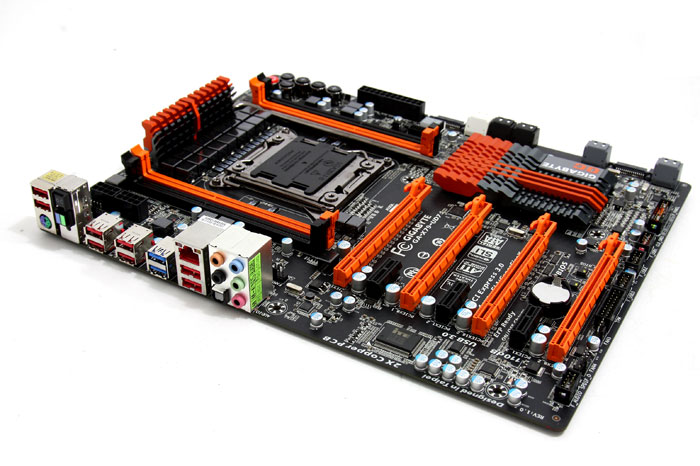Introduction

Introduction
When the X79 chipset launched two weeks ago, all motherboard manufacturers jumped on that bandwagon as they have noticed severe e-peen potential ever since they received their first Sandy bridge-E processors. All of them launched a rather sizable amount of X79 motherboards in different shapes and sizes.
Gigabyte as well launched several X79 motherboards like the G1.asassin, the UD3, UD5 and sure... the UD7. That last one we'll be looking at today. A very complete motherboard I must say, with all kinds of gadgets and fresh looks.
The X79-UD7 uses a black PCB with orange color scheme and incorporates advanced overclocking features. You'll notice later on in the review that Gigabyte placed a series of voltage read points, controls for adjusting the processor ratio and BCLK on the fly, as well as dip-switches to change the PWM frequency in the lower right corner of the board.
Power to the CPU is delivered through a 20-phase VRM that uses POSCAP low-profile capacitors, while the additional current required by 4-way GPU setups is delivered through a series of angled SATA power plugs placed on the lower side of the board.
You will see four PCI Express x16 slots, the rest of the expansion options available in the X79-UD7 include three PCIe x1 slots, four SATA 3Gbps ports, as well as a good six SATA 6Gbps ports. The rear I/O bracket shows a pair of USB 3.0 ports and 7.1-channel audio with digital S/PDIF out, but also a special OC button and a CMOS reset switch.
Two more USB 3.0 ports are available through an on-board header that is placed right between the bottom DIMM sockets and the BIOS POST display. And yeah also a PCIE 1x wireless card is included.
Anyway, head on over to the next page where we'll discuss the X79 chipset, the respective Gigabyte X79 UD7 model. Then we'll throw a decent photo-shoot and a benchmark suite at the products and get an indication what performance is like with the Intel Core i7-3960X (Sandy Bridge-E) and X79 Platform.

